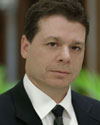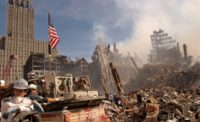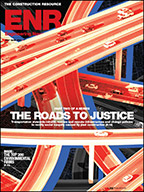Recovery from natural and man-made disasters is often assigned in part to engineers, who we expect to answer the call to fix the problem. Knowing the inevitability of periodic catastrophes, the American Council of Engineering Companies of New York (ACEC New York) strongly supports emergency responder legislation to prevent future misguided lawsuits against engineering firms for on-site conditions that are entirely outside their assigned responsibility. Unlike Good Samaritan Laws, which protect only unpaid volunteers from liability for work performed during state or national disasters, emergency responder legislation would provide design firms immunity from lawsuits that attempt to make engineers responsible for work outside their scope. Emergency responder legislation would ensure that engineering firms would be available and able to respond to future emergencies.

SIMSON
An example of an inequitable lawsuit is the air quality litigation against structural engineers following the site clean-up after the September 11th attacks at the World Trade Center. The immediate response by the engineering community in providing structural consulting services at Ground Zero contributed to perhaps the largest recovery and site clean-up in modern history. Structural engineers were hired to assess the structural stability of the surrounding buildings and the massive debris pile that in areas reached the height of a ten-story building. They performed this task successfully as no serious injury or fatality resulted from structural instability.
Unfortunately, there are thousands of lawsuits against these firms that do not relate at all to their work as professional engineers. These are claims by over 10,000 plaintiffs who allege illness due to toxic exposures. Understanding that air quality has been subsequently linked to certain lung and heart diseases in the disaster workers, and that these individuals may be entitled to recompense for their resulting health problems, how is it that structural engineers can be held liable for work performed far beyond their scope of work?
The engineering profession is committed to public safety and integrity, but its responsibility to the public can only extend to the areas in which they are knowledgeable. The lawsuits pertaining to air quality at Ground Zero are exacerbating to these firms hired to assess structural matters. Not only are the lawsuits themselves enormously expensive, but they also called into question whether firms can afford to offer their services in the event of future catastrophes. Following Hurricane Katrina, there were virtually no engineering volunteers from New York because of their fear of litigation. It is unfortunate that litigation regarding health effects at Ground Zero would prevent engineers from aiding in catastrophic situations, where their expertise is not only helpful, but necessary.
In aggregate, engineering firms have spent millions of dollars in legal fees and lost hours providing materials to defend their actions at Ground Zero. They did not have the luxury of evaluating potential risks and factoring them into whether or not they should respond to the attack. Instead, they were on-site immediately after the attacks and provided professional expertise relating to structural matters 24 hours a day, seven days a week for close to four months. It was an amazing and heroic effort with not one fatality during the arduous recovery and cleanup process.
One model for change is California’s, where emergency situations caused by fire, mud slides and earthquakes require public/private partnerships as a way to alleviate state and federal resources. California’s Office of Emergency Services has created a Memorandum of Understanding (MOU) between the state and private entities that assist in responding to a disaster. The MOU reads that since private entities are working with the state in the response, they fall under the liability of the state. Such a model that recognizes the critical importance of an immediate lifesaving response, with the necessary and appropriate protection, is what is needed to ensure the best response and outcome for all types of disasters, man-made or natural. Florida also has a statute to address disasters � typically hurricanes � but it closely mirrors that of Good Samaritan protection, where responders are not liable for damages if they offer their services without compensation in a time of disaster.
ACEC New York is promoting common-sense change so that, in the future, engineers will be able to step up and provide necessary expertise without putting their businesses or personal property at risk. We need emergency responder legislation now.





Post a comment to this article
Report Abusive Comment